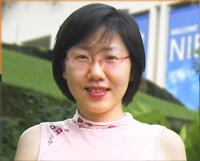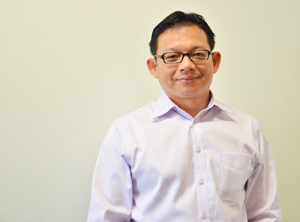From Theory to Practice
The Motivation in Educational Research Lab in NIE was set up to look into motivation and learning. We find out how their researchers are working to translate theory into practice for teachers.
Professor John Wang has always been very interested in motivation. In particular, he’s a strong advocate of the self-determination theory (SDT), which looks at how social and cultural factors can influence an individual’s motivation.
The theorists behind SDT, Professors Edward L. Deci and Richard Ryan of University of Rochester, are researchers that he regards highly. “It was one of my dreams to work with them and if my dream could come true, that would be the best thing in the world!”
It did eventually come true. Prof Wang decided to set up the Motivation in Educational Research Lab (MERL) in NIE with Associate Professor Liu Woon Chia (Associate Dean of Practicum and School Partnerships) in 2009, with Professor Tan Oon Seng (Dean of Teacher Education) acting as adviser. He invited Professors Deci and Ryan on board to work with them as MERL’s consultants.
“Translating Theory into Practice”
Apart from fulfilling a personal dream, Prof Wang has other ideas when he set up MERL.
The question teachers should ask is, “How can I create the environment in which students can motivate themselves?”
– John Wang, Motivation in Educational Research Lab (MERL)
“MERL’s main purpose is very clear. We have a tagline, ‘Translating theory into practice’,” says Prof Wang. He noticed that many research papers are too theoretical to be truly useful for teachers. He decided that MERL should be a place where teachers can find practical resources on how they can motivate their students.
“We read the research papers for teachers, absorb and summarize the contents and then convert them into classroom strategies,” says Prof Wang. These strategies are available on MERL’s website and are used by teachers in Singapore and worldwide.
Another role that MERL plays is in developing research capacity and providing research support for NIE staff and even teachers.
“We have regular research seminars that teach researchers and teachers how to use statistics to analyse results, and how to do research, and we also share our research findings. The seminars work on a rotational basis so every one chips in,” Prof Wang notes.
MERL also invites prominent researchers to Singapore, such as Professors Deci and Ryan, who launched MERL in 2009 and spoke to an audience of more than 1,000 researchers and teachers.
A Community of Researchers
A group of NIE researchers who are investigating the relationship between motivation and learning now form the core of MERL.
One of them is Assistant Professor Nie Youyan. “We form a community and discuss and share our ideas and understanding,” she says. “Some of us are beginning researchers while some are leading professors in the field. I’ve learned a lot from the discussions within this community.”
In fact, it was at a sharing session organized by MERL where she met Professor Andrew Elliot from the University of Rochester. “He’s an expert on the achievement goal theory,” she says. “We started talking about my research project and he later became a collaborator.”

Professors Richard Ryan (back row, 4th from left) and Edward L. Deci, the theorists behind self-determination theory, with MERL researchers.
School-based Projects
This group of researchers work very closely with teachers for their research on motivation. Prof Wang estimates that 90% of the projects they undertake are school-based.
One such example is Prof Wang’s work that looks at how we might promote intrinsic motivation (doing something because it is inherently interesting or enjoyable) in students using SDT.
“Many teachers keep on asking themselves, ‘How can I motivate my students?’ That question is actually fundamentally wrong,” Prof Wang says. “Children have in them inner resources to excel and to motivate themselves.”
Instead, the question teachers should ask is, “How can I create the environment in which students can motivate themselves?”
SDT is about three things: Competence, autonomy, and relatedness. “Every one of us has these 3 innate psychological needs. If the environment can facilitate the fulfilment of these needs, a person would excel,” Prof Wang explains.

Nie Youyan finds that she learned a lot from the discussions with MERL researchers.
Students feel competent when they are challenged and given prompt feedback. They experience autonomy when they are supported to explore, take initiative and develop solutions. And when they can see that others are listening and responding to them, they experience relatedness.
Prof Wang and his research team have been working with schools to create environments where students can fulfil all three needs. For example, teachers are asked to use neutral language when communicating with their students.
“We ask them to say things like, ‘If you want to do this, you can. If you want to do that, you’re allowed to as well. Don’t worry, just try and see what is better.’ This is as opposed to, ‘You should do this now. You ought to do this.'” Prof Wang elaborates.
Competition versus Learning
Youyan is also working on a project that looks student motivation and learning. She was once involved in the Core Research Program a flagship project of the Centre for Research in Pedagogy and Practice.
Some of us are beginning researchers while some are leading professors in the field. I’ve learned a lot from the discussions within this community.
– Nie Youyan,
Psychological Studies Academic Group
Through its survey of nearly one-third of Primary 5 and Secondary 3 students in Singapore, researchers had found that if a school promotes a culture of competition, students’ achievement may be affected negatively. They will also tend to avoid work and are more likely to stop trying when the going gets tough.
However, if teachers focus on learning as the ultimate goal, students tend to perform better and are more likely to persevere in the face of learning challenges.
The Core Program was looking at the larger picture of school culture then, but Youyan is now zooming in on assessment practices of teachers. Using the laboratory facilities of MERL, she and her team will test how different types of feedback affect students.
The feedback will compare students’ achievement against their peers (norm-referenced feedback), a learning target (criterion-referenced feedback) or their past achievements (self-referenced feedback). (See related article in Issue 40: Using Feedback to Enhance Learning)
Testing the effect of all three types of feedback is something researchers have not tried before, says Youyan. Their attempt will be a first in motivation and learning research.
Youyan hopes the project will show teachers what kind of feedback works best for their students. In particular, she thinks the findings will come in handy in the designing of computer-assisted assessment. If so, her work will truly reflect the aim of translating research into something that works for both teachers and learners.







